Comments / Questions (246)
![]() Früh Anita wrote:
Früh Anita wrote:
Hallo. Die Frage mit den Raglanzunahmen habe ich glaube ich rausbekommen. Aber etwas verstehe ich nicht ganz (Knopf in der Leitung): bei in dieser Weise weiterarbeiten heisst es „jedesmal wenn A.1, A.2, und A.3 1x in der Höhe gestrickt wurden 2 Rapporte von A.2 zwischen A.1 und A.3 Stricken. „ Woher sind die Maschen dazu ? Besten Danke für die Weiterhilfe.
18.04.2022 - 19:54DROPS Design answered:
Liebe Frau Früh, die Raglanzunahmen bei den Ärmeln stricken Sie in A.1 (rechts im Diagram) und A.3 (links im Diagram); jedesmal diese beide Diagramme in der Höhe gestrickt sind, haben Sie 14 Maschen in je A.1/A.3 = so haben Sie genügend Maschen für 1 x A.2 beidseitig. Dh über die 16 Maschen A.1 stricken Sie: A.1, A.2 und über die 17 Maschen A.3 stricken Sie: A.2, A.3. Viel Spaß beim stricken!
19.04.2022 - 11:45
![]() Früh Anita wrote:
Früh Anita wrote:
Hallo. Meine Frage zu den Raglanzunahmen beidseitig von Vorder- und Rückenteil: vor markierten Maschen, muss ich dem Umschlag, der in der nächsten Runde Rechts angestrickt wird, jede 2. Runde machen und jede 2. Runde abstricken ? Irgendwie komme ich damit nicht ganz klar. Besten Dank für ihre Antwort. Freundliche Grüsse Anita Früh
17.04.2022 - 15:20DROPS Design answered:
Liebe Frau Früh, stricken Sie bis die Masche mit der Markierung übrig ist, nehmen Sie jetzt 1 Masche (= 1 Umschlag) zu, und striken Sie die Masche mit der Markierung = Ende Rückenteil/Vorderteil, am Anfang Vorder- und Rückenteil stricken Sie nach der Ärmel die Masche mit der Markierung, dann nehmen Sie 1 Masche zu (= Umschlag). Bei der nächsten Runde stricken Sie die Umschläge glatt rechts. Diese 2 Runden wiederholen - die Ärmel stricken Sie wie im Diagramm gezeigt. Viel Spaß beim stricken!
19.04.2022 - 11:17
![]() Ginette DeBlois wrote:
Ginette DeBlois wrote:
Dans la partie empiècement, je suis au premier tour, je fais A.1 ça me donne 3 maille et non 2 mailles, puis A.2 avec 14 mailles comme prévu et A.3 me donne 4 mailles et non 3, je me retrouve avec 21 mailles et non 19, normal???
03.04.2022 - 19:02DROPS Design answered:
Bonjour Mme DeBlois, vous avez juste: A.1 se tricote sur 2 mailles (= 1 m end, 1 m env + 1 jeté) = vous avez 3 mailles à la fin du 1er tour; et A.3 se tricote sur 3 mailles (= 1 m end + 1 jeté + 1 m env, 1 m end) = vous avez 4 mailles à la fin du 1er tour. Mais vous devez terminer par 16 m dans A.1 et 17 m dans A.3 - essayez de mettre un marqueur entre chaque diagramme pour vous aider à bien vérifier le nombre de mailles à chaque rang. Bon tricot!
04.04.2022 - 10:43
![]() Anne Engesmo wrote:
Anne Engesmo wrote:
Hei, jeg har et spørsmål om 2. omgang på bærestykket til oppskrift 211-5. Der skal ifølge diagrammet vrangmasken forskyves 1 maske til høyre på A1. Samtidig står det under forklaringen til raglansfellingen at økningene er tegnet inn i mønster A1 og A3. Hvordan få dette til å gå opp? Jeg ser at mitt spørsmål er stilt tidligere og at dere svarer "du tager automatisk ud til raglan i hver omgang" hvilket ikke stemmer overens med at det ikke skal økes på ermene. Hilsen Anne
23.03.2022 - 06:36DROPS Design answered:
Hej Anne, jo udtagningen er tegnet ind i diagrammet som et omslag. Hvis du sætter et mærke imellem hver diagram, så bliver det letter for dig at se at du på næste pind har 3 masker i A.1 istedet for 2 masker. God fornøjelse!
30.03.2022 - 14:19
![]() Pilar wrote:
Pilar wrote:
Me puede por favor explicar cómo tejer la vuelta número 21 de los esquemas A1, A2 y A3? Se debe iniciar cogiendo un punto anterior?gracias
01.03.2022 - 14:44DROPS Design answered:
Hola Pilar, la fila 21 se trabaja como sigue: 1d, 1r, HEB, 2pjd, 2d, HEB, 1d, HEB, 2d, dism simple (deslizar 1, 1 derecho, pasar), HEB, 1r, dism doble (deslizar 1, 2pjd, pasar) [= A.1], *1r, HEB, 2pjd, 2d, HEB, 1d, HEB, 2d, dism simple, HEB, 1r, dism doble* [= A.2], repetir de * a * hasta que queden 12 puntos, 1r, HEB, 2pjd, 2d, HEB, 1d, HEB, 2d, dism simple, HEB, 1r, 1d [= A.3].
01.03.2022 - 18:25
![]() Erika wrote:
Erika wrote:
Buongiorno, non mi è chiaro questo passaggio delle sprone: "Ogni volta che vengono lavorati A.1, A.2 e A.3 in altezza, si lavorano 2 ripetizioni in più di A.2 tra A.1 e A.3. " Quindi seguo fino alla fine i diagrammi A1 A2 A3, poi rifaccio il diagramma ma ripetendo due volte A2, quindi A1 A2 A2 A3? Ma i punti in più dove li trovo per farlo? Grazie
29.01.2022 - 10:34DROPS Design answered:
Buongiorno Erika, si esatto, quando lavora 1 volta A,1, A.2 e A.3, potrà lavorare 2 ripetizioni in più di A.2 con le maglie aumentate nei diagrammi A.1 e A.3. Buon lavoro!
29.01.2022 - 14:19
![]() Lisbeth Sandaker Hernes wrote:
Lisbeth Sandaker Hernes wrote:
Jeg kan altså ikke få dette diagrammet til å gå opp på rad 2, der skal vrangmasken forskyves 1 maske til høyre for den på første rad, men det er jo umulig, fordi det er ingen økning etter merkemasken . Det står også at raglanøkningene er tegnet inn i diagrammet, det kan ikke jeg se at det er?? Jeg strikker str.M, 116 masker, og de er fordelt ihh. til forklaring i mønster
04.10.2021 - 23:12DROPS Design answered:
Hej Lisbeth, jo når du strikker ifølge diagrammet, så tager du automatisk ud til raglan i hver overgang. Husk at du starter nederst i højre side af alle diagrammerne, så ser du at der er tegnet omslag ind på 1. 3. 5 pind osv... God fonrøjelse!
06.10.2021 - 15:15
![]() Sheila Kaupa wrote:
Sheila Kaupa wrote:
I am working the body of this pattern. I see you are to "cut the strand" and then begin the round to work in the A4 diagram under the arm. Since we are working in the round, why must we cut and then add a new strand? Can't we just stitch to the portion of the pattern where we need to begin the A4 diagram so cutting and starting new strand is not necessary? I don't understand why this is needed.
28.08.2021 - 21:47DROPS Design answered:
Dear Sheila, with cutting the yarn, and starting again at the sides, you are moving the beginning of the round to the sides, while keeping the to half of the back symmetrical. If you would continue to the side, one half would be higher. Happy Stitching!
28.08.2021 - 22:45
![]() Eugenia wrote:
Eugenia wrote:
Hi! I'm size M, so I'd casted on 116 stiches and I have a problem in parting the stiches for front sleeves and back. There are 112 all together, but I have 116. Thank you.
26.07.2021 - 16:20DROPS Design answered:
Hi Eugenia, It is possible you have forgotton to count the marker-stitches (you count, insert the marker in the next stitch, then count again) which is why you have 112 instead of 116. Happy knitting!
27.07.2021 - 09:31
![]() Laura wrote:
Laura wrote:
Hallo, ich habe eine Frage zu den korrigierten Reihen. Ist es egal welche Umschläge in der 9. Reihe entfernt werden und wo in der 13. Reihe zwei Umschläge zusätzlich gemacht werden müssen? Hat es nicht Auswirkungen auf das Muster? Wenn ja welche Umschläge sollen gestrichen werden und wo die zusätzlichen Umschläge erfolgen?
22.07.2021 - 22:10DROPS Design answered:
Liebe Laura, wenn Sie die Anleitung nach der Korrektur gedruckt haben, dann stimmen alle Diagamme (bzw A.4 wurde dann schon korrigiert), sollten Sie aber die Anleitung vor der Korrektur gedruckt haben, dann drucken Sie am besten A.4 noch einmal, so arbeiten Sie mit dem richtigen Diagram. Viel Spaß beim stricken!
23.07.2021 - 08:26
Catch the Wind#catchthewindtop |
|||||||||||||||||||
 |
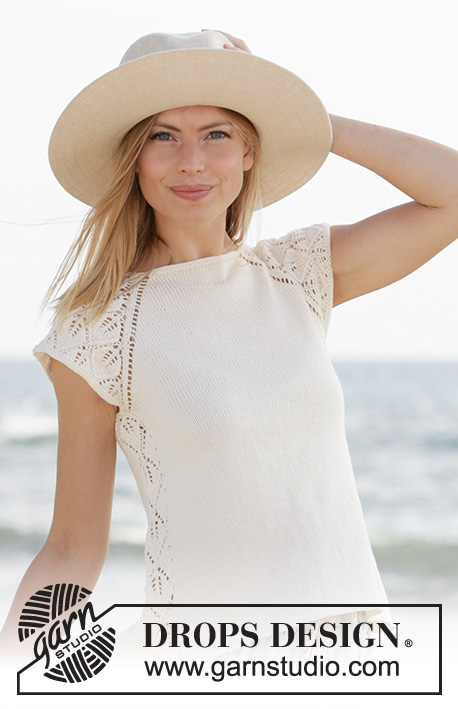 |
||||||||||||||||||
Knitted top with raglan and short sleeves in DROPS Safran. The piece is worked top down with lace pattern. Sizes XS - XXL.
DROPS 211-5 |
|||||||||||||||||||
|
------------------------------------------------------- EXPLANATIONS FOR THE PATTERN: ------------------------------------------------------- RIDGE/GARTER STITCH (worked in the round): 1 ridge in height = 2 rounds; Knit 1 round and purl 1 round. PATTERN: See diagrams A.1 to A.4. RAGLAN: Increase to raglan on each side of the back piece and each side of the front piece (towards the sleeves). Increase by making 1 yarn over before/after the stitch with the marker thread; on the next round knit the yarn overs to leave holes. The increases on the sleeves are drawn into patterns A.1 and A.3. ------------------------------------------------------- START THE PIECE HERE: ------------------------------------------------------- TOP – SHORT OVERVIEW OF THE PIECE: The neck and yoke are worked in the round with circular needle, top down. The yoke is divided for body and sleeves and the body continued in the round. A small edge is worked around the armholes. NECK: Cast on 106-110-116-120-124-132 stitches with circular needle size 3 mm = US 2,5 and Safran. Work 2 RIDGES – read description above. Then work the yoke as described below. YOKE: Insert 4 marker threads in the piece as described below (without working the stitches). The threads will be used when increasing to raglan. Count 16-17-18-19-20-22 stitches (= half back piece), insert 1 marker thread in the next stitch, count 19 stitches (= sleeve), insert 1 marker thread in the next stitch, count 32-34-37-39-41-45 stitches (= front piece), insert 1 marker thread in the next stitch, count 19 stitches (= sleeve), insert 1 marker thread in the next stitch. There are 16-17-19-20-21-23 stitches after the last marker thread (half back piece). The first round is worked as follows: Work stockinette stitch as far as the first marker-stitch, make 1 yarn over (first increase to RAGLAN – see description above), work the marker-stitch in stockinette stitch, A.1 (= 2 stitches), A.2 (= 14 stitches) and A.3 ( = 3 stitches) (= 19 stitches on the sleeve), work the marker-stitch in stockinette stitch, 1 yarn over, work stockinette stitch as far as the next marker-stitch (= front piece), 1 yarn over, work the marker-stitch in stockinette stitch, A.1 (= 2 stitches), A.2 (= 14 stitches) and A.3 (= 3 stitches) (= 19 stitches on the sleeve), work the marker-stitch in stockinette stitch, 1 yarn over, work stockinette stitch over the remaining stitches (= half back piece). Continue this pattern with stockinette stitch on the front and back pieces and A.1, A.2 and A.3 on the sleeves. Each time A.1, A.2 and A.3 are worked 1 time in height, you work 2 more repeats of A.2 between A.1 and A.3. REMEMBER THE KNITTING GAUGE! AT THE SAME TIME continue to increase to raglan every 2nd round a total of 22-26-28-31-35-39 times at each marker thread (including the first increase described above). The new stitches are worked in stockinette stitch on the front and back pieces and in lace pattern as shown in the diagrams on the sleeves. When the increases to raglan are finished there are 294-334-356-388-424-468 stitches on the needle. The next round is worked as follows: Work 39-44-47-51-56-62 stitches (= half the back piece), place the next 69-79-83-91-99-109 stitches on 1 thread for the sleeve, cast on 9-9-9-11-13-15 new stitches on the needle (= in side under sleeve), work 78-88-95-103-113-125 stitches (= front piece), place the next 69-79-83-91-99-109 stitches on 1 thread for the sleeve, cast on 9-9-9-11-13-15 new stitches on the needle (= in side under sleeve), work the last 39-44-48-52-57-63 stitches (= half back piece). Body and sleeves are finished separately. THE PIECE IS NOW MEASURED FROM HERE! BODY: = 174-194-208-228-252-280 stitches. Insert 1 marker thread in the middle of the 9-9-9-11-13-15 stitches cast on under each sleeve. Cut the strand and begin the round 6 stitches before 1 of the stitches with marker thread. Work A.4 (= 13 stitches), work 74-84-91-101-113-127 stitches in stockinette stitch, work A.4 and then stockinette stitch over the last 74-84-91-101-113-127 stitches. Continue this pattern, AT THE SAME TIME, when the piece measures 2 cm = ¾", increase by making 1 yarn over on each side of A.4, on the next round knit the yarn over twisted to avoid holes (= 4 increased stitches). Repeat the increase every 1 ½ cm = ½" a total of 18 times; the increased stitches are worked in stockinette stitch = 246-266-280-300-324-352 stitches. When the piece measures 28-29-29-30-29-29 cm = 11"-11⅜"-11⅜"-11¾"-11⅜"-11⅜" from the division work 2 ridges over all stitches, then bind off. SLEEVE-EDGE: Place the 69-79-83-91-99-109 stitches on one of the threads on short circular needle size 3 mm = US 2,5 and knit up 1 stitch in each of the 9-9-9-11-13-15 new stitches under the sleeve = 78-88-92-102-112-124 stitches. Work 2 ridges over all stitches, then bind off. Work the other sleeve-edge in the same way. |
|||||||||||||||||||
Diagram explanations |
|||||||||||||||||||
|
|||||||||||||||||||
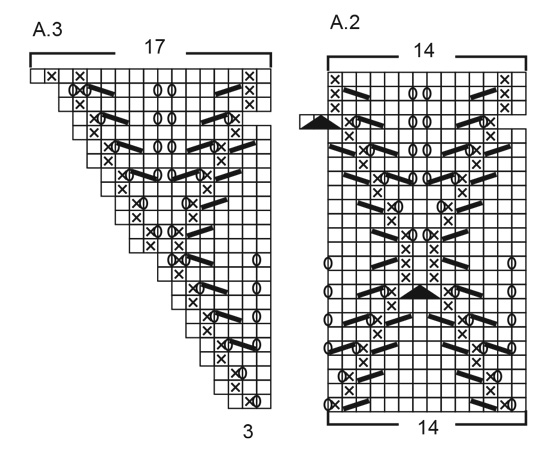 |
|||||||||||||||||||
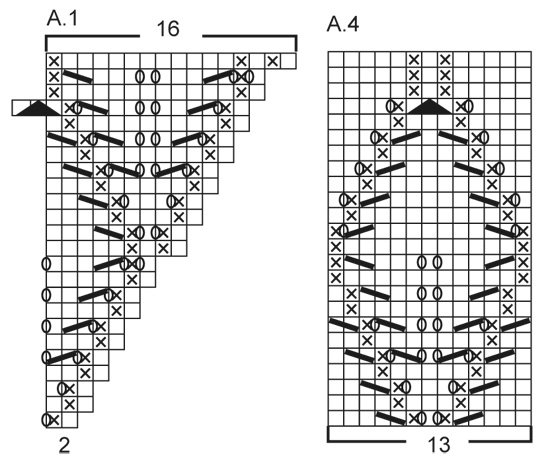 |
|||||||||||||||||||
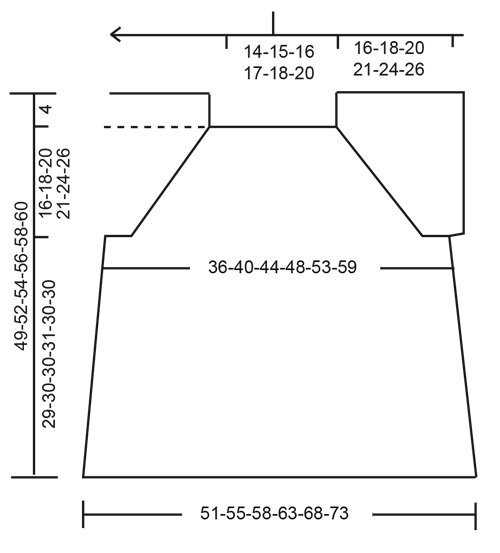 |
|||||||||||||||||||
Have you finished this pattern?Tag your pictures with #dropspattern #catchthewindtop or submit them to the #dropsfan gallery. Do you need help with this pattern?You'll find 19 tutorial videos, a Comments/Questions area and more by visiting the pattern on garnstudio.com. © 1982-2025 DROPS Design A/S. We reserve all rights. This document, including all its sub-sections, has copyrights. Read more about what you can do with our patterns at the bottom of each pattern on our site. |
|||||||||||||||||||








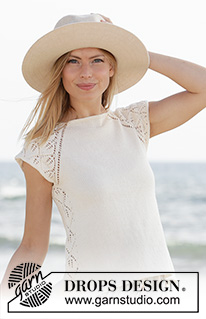




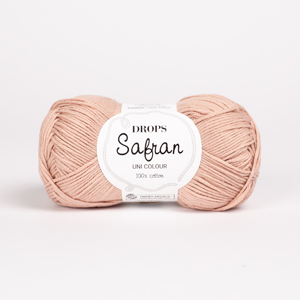

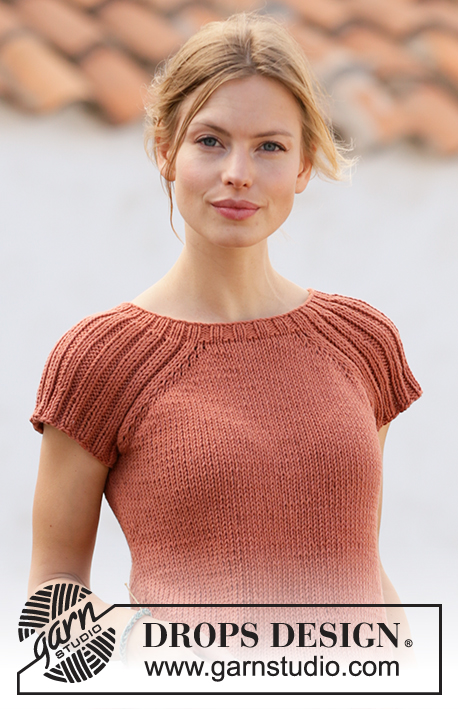

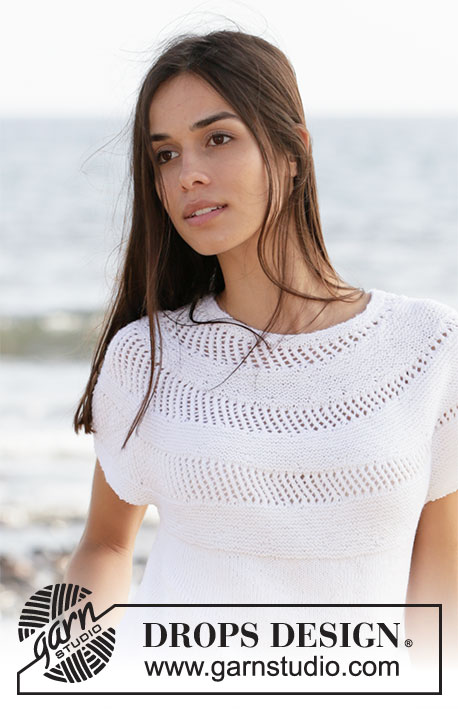
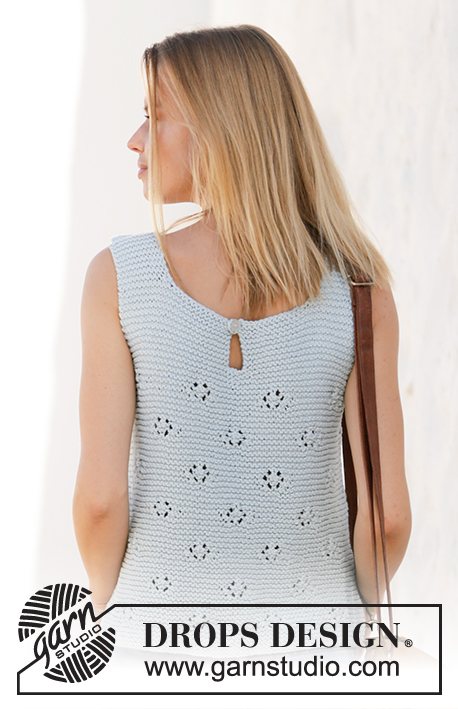





































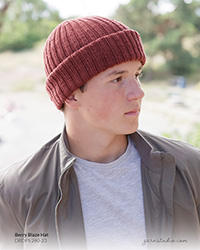
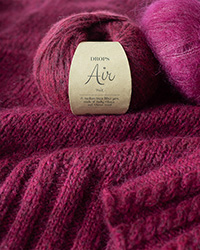
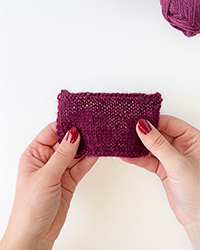

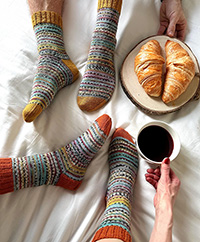
Post a comment to pattern DROPS 211-5
We would love to hear what you have to say about this pattern!
If you want to leave a question, please make sure you select the correct category in the form below, to speed up the answering process. Required fields are marked *.